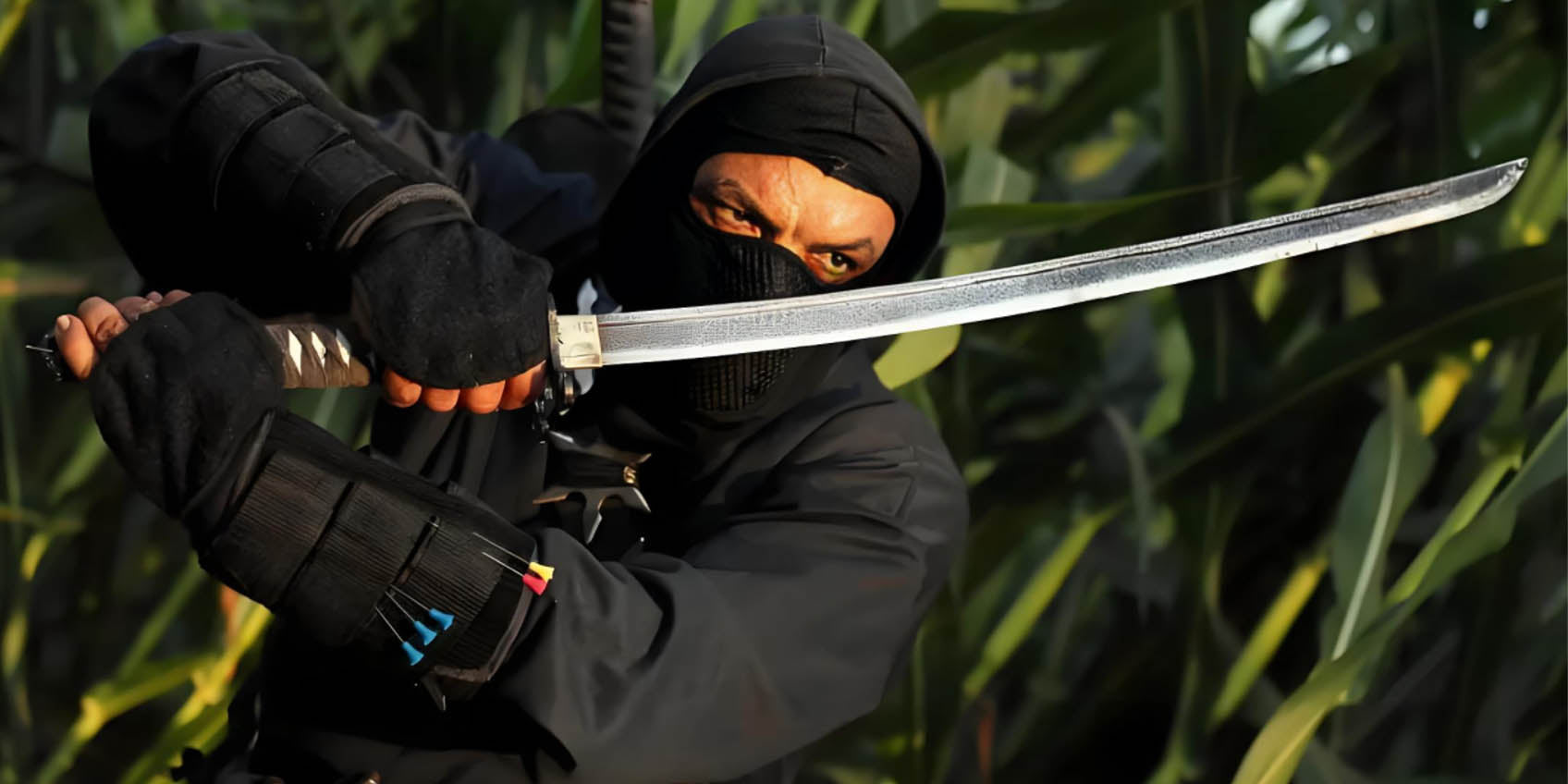The Evolution of Ninja Swords: From Tradition to Modern Technology

Ninja swords, also known as Ninjato (忍刀), are unique weapons used by ninjas throughout Japanese history. Compared to samurai swords (such as Katana and Wakizashi), the design of Ninjato emphasizes stealth and practicality. This article explores the historical evolution of the Ninjato and how modern technology influences the crafting and application of this traditional weapon.
Differences Between Ninjato and Samurai Swords
Ninjato and samurai swords are two iconic blades in Japanese weapon culture, but they differ significantly in design, function, and usage scenarios.
1. Blade Length and Shape
Ninjato typically have shorter blades, measuring around 24 inches (approximately 60.96 cm), with a straight blade design. This makes the Ninjato more suitable for use in tight spaces, allowing for stealthy and quick strikes. In contrast, samurai swords usually have blades longer than three feet (approximately 90 cm) with significant curvature, sharp edges, and are designed for direct confrontations and extensive cutting movements.
2. Materials and Craftsmanship
While both are made from high-carbon steel, the craftsmanship of samurai swords is more intricate, often involving multiple steel types forged together with rigorous heat treatment and tempering processes to achieve the best balance of hardness and resilience. The crafting of Ninjato is relatively simpler, focusing more on practicality and concealment, with blades that are usually less sharp than those of samurai swords.
3. Purpose and Tactics
Ninjato are primarily used for stealth operations and surprise attacks, with blades that are somewhat dull and designed for thrusting rather than slashing. Samurai swords, on the other hand, are emblematic of the samurai class and are mainly used for battle and honor, featuring sharp edges suitable for direct confrontations and cutting.
4. Cultural Significance
In Japanese culture, samurai swords symbolize not just a weapon but also the spirit and honor of the samurai, emphasizing loyalty and bravery. Ninjato, however, are closely tied to the mysterious ninja culture, representing secrecy and cunning, reflecting the unique position of ninjas in history.
Traditional Design of the Ninjato
The characteristics of the Ninjato include a shorter blade, typically around 24 inches (approximately 60.96 cm) in length, often featuring a straight edge and a square guard. Compared to samurai swords, Ninjato generally have lower quality and sharpness, primarily used for thrusting rather than slicing. This design places ninjas at a disadvantage in direct confrontations, as they rely on stealth tactics and clever strategies to succeed.
Historically, ninjas often disguised themselves as ordinary citizens to avoid detection by authorities. To enhance concealment, their weapons were frequently adapted from everyday farming tools or gardening implements, making them appear as common objects. Ninjato served not only as combat tools but also as survival aids, helping ninjas minimize the risk of discovery while executing their missions.
Evolution of Key Ninja Weapons
Ninja weapons are diverse, with seven main types of ninja tools:
-
Shuriken: A type of throwing star used for ranged attacks, often coated with poison to enhance lethality.
-
Makibisi: Diamond-shaped spikes used to obstruct pursuers during escapes; any uneven object can serve as a substitute.
-
Sinobigatana: Equipped with a rope approximately three meters long for climbing walls, with the scabbard serving as an air tube for emergencies.
-
Hukiya: A poison needle concealed within a flute, requiring the ninja to possess flute-playing skills.
-
Sikomidue: A cane that conceals a chain, spear, or sword, making it easy to carry and use.
-
Tek Kouka: Claws that can be attached to the fingers or backs of the hands for close combat.
-
Mizugumo: A folding tool for crossing rivers, typically hidden within a package.
Modern Technology's Impact on Ninjato
Today, the crafting of Ninjato not only retains traditional handcrafting techniques but also integrates advanced technology. High-performance alloy steels and forging techniques have significantly improved the durability and sharpness of Ninjato. Additionally, modern laser cutting and CNC machining technologies allow for more precise blade shapes and edges.
Moreover, contemporary Ninjato designs consider ergonomics to enhance comfort and safety for users. Many Ninjato manufacturers also offer customization services, creating unique blade designs based on individual needs and usage scenarios.
Conclusion
As a weapon rich in historical culture, the Ninjato continues to attract enthusiasts even after centuries. The combination of traditional craftsmanship and modern technology has significantly enhanced the functionality and performance of the Ninjato. Whether as a weapon, collector's item, or cultural symbol, the Ninjato is continuously evolving, maintaining its unique charm. With ongoing technological advancements, the future of the Ninjato promises to be even more exciting.
Hand Forged Japanese Ninja Sword Damascus Folded Steel Straight Blade Ninjato Unokubi-Zukuri
The handcrafted Japanese Ninjato by COOLKATANA features a Damascus folded steel straight blade design, showcasing the unique Unokubi-Zukuri blade shape suitable for various combat and display needs. This Pojun combat sword is made from high-strength spring steel, with a blade that can bend up to 70 degrees without deforming, demonstrating its exceptional performance and durability.
Its all-black design not only offers a tactical aesthetic but also makes it suitable for various environments. Each sword is meticulously handcrafted and polished by master smiths, featuring a full tang structure and battle-ready design that enhances durability while ensuring every detail is flawless. Additionally, the sword includes a free custom engraving service, making each piece unique and showcasing individual characteristics.
This Hand-Forged Japanese Ninja Sword, crafted from Damascus folded steel with a sleek straight blade in the traditional Ninjato Unokubi-Zukuri style, offers both stunning aesthetics and exceptional performance. The intricate folding process gives the blade a unique and beautiful pattern, while maintaining sharpness and durability for practical use.
Designed for ninja enthusiasts and collectors, this Ninjato captures the essence of historical ninja weapons, combining stealth and precision. Whether you are passionate about shinobu, ninja gear, or the craftsmanship of ninja blades, this sword offers a perfect blend of form and function. The straight blade design, along with the expert forging techniques, makes this sword not just a display piece but also a fully functional weapon.
Perfect for fans of traditional Japanese swords and ninja weapons, this Damascus Ninjato is a must-have addition to any collection.




